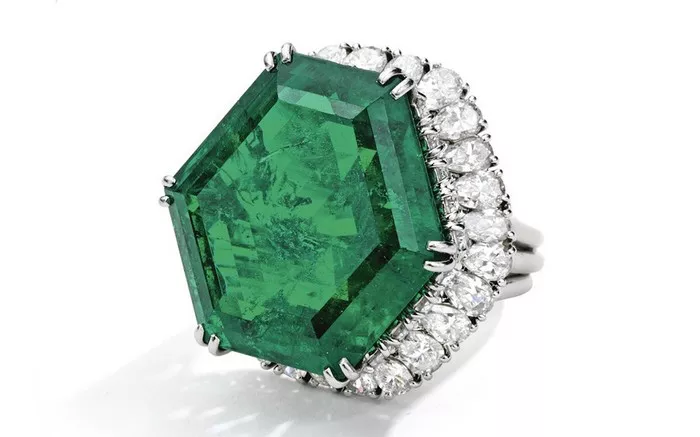Green tourmaline, also known as verdellite, is a captivating gemstone prized for its stunning green color and metaphysical properties. As one of the most sought-after varieties of tourmaline, green tourmaline has become increasingly popular in the world of gemstone jewelry and crystal healing. However, with the rise in demand for green tourmaline, there has also been an increase in the availability of synthetic and imitation stones, making it important for consumers to be able to distinguish between genuine and fake green tourmaline. In this article, we will explore how to tell if green tourmaline is real by examining its key characteristics, properties, and testing methods.
Understanding Green Tourmaline
Green tourmaline is a variety of the mineral tourmaline, which belongs to the cyclosilicate family of minerals. It is valued for its vibrant green color, which ranges from light, minty shades to deep, forest green hues. The green color of tourmaline is caused by the presence of iron and manganese within the crystal structure, giving it its distinctive hue.
Green tourmaline is found in various locations around the world, including Brazil, Madagascar, Namibia, and the United States. It is often found in association with other minerals such as quartz, mica, and feldspar.
Green tourmaline is renowned for its metaphysical properties, which are said to promote healing, abundance, and emotional balance. It is believed to resonate with the heart chakra, enhancing feelings of love, compassion, and harmony.
How to Tell if Green Tourmaline is Real
Distinguishing between real and fake green tourmaline requires careful examination and testing of the gemstone’s characteristics and properties. Here are some key indicators to look for when determining if green tourmaline is real:
Color: The color of green tourmaline is one of the most important factors in determining its authenticity. Genuine green tourmaline exhibits a rich, vibrant green color that is often described as “emerald green” or “mint green.” The color should be consistent throughout the stone, with no noticeable color zoning or uneven distribution of color. Be wary of green tourmaline that appears too pale, too dark, or has unnatural hues such as blue or yellow, as these may indicate synthetic or treated stones.
Clarity: Clarity refers to the presence of inclusions or internal flaws within the green tourmaline. While some inclusions are expected in natural tourmaline due to its formation process, genuine green tourmaline typically has fewer inclusions compared to synthetic or imitation stones. Look for green tourmaline with minimal to no visible inclusions under magnification, as excessive inclusions may indicate a fake or low-quality stone.
Cut: The cut of green tourmaline can also provide clues to its authenticity. Genuine green tourmaline is often cut in traditional shapes such as oval, emerald-cut, or pear-shaped, to maximize its color and brilliance. Pay attention to the quality of the cut, as well as the symmetry and proportions of the facets. Poorly cut or irregularly shaped green tourmaline may be indicative of a synthetic or imitation stone.
Surface Texture: The surface texture of green tourmaline can reveal valuable information about its authenticity. Genuine green tourmaline has a smooth, polished surface with a natural luster that reflects light evenly. Be cautious of green tourmaline with a dull or waxy appearance, as well as those with visible scratches, pits, or rough patches, which may indicate a fake or treated stone.
Weight and Density: Genuine green tourmaline has a specific gravity ranging from 3.03 to 3.25, depending on its composition and origin. You can determine the density of green tourmaline by comparing its weight to its volume. Genuine green tourmaline is typically heavier and denser than most imitations, such as glass or plastic. You can use a gemological scale or water displacement method to measure the density of the green tourmaline and assess its authenticity.
Testing Methods for Real Green Tourmaline
In addition to visual inspection, there are several testing methods you can use to determine if green tourmaline is real:
Refractive Index: You can use a refractometer to measure the refractive index of green tourmaline and compare it to the known values for genuine tourmaline. The refractive index of green tourmaline typically falls within the range of 1.614 to 1.666, depending on its composition and origin.
Specific Gravity: You can measure the specific gravity of green tourmaline using a gemological scale or water displacement method to assess its density and determine its authenticity.
Spectroscopy: Spectroscopy techniques, such as UV-visible spectroscopy and infrared spectroscopy, can be used to analyze the chemical composition and spectral characteristics of green tourmaline, providing valuable information about its authenticity and any treatments or enhancements it may have undergone.
X-Ray Fluorescence (XRF): XRF analysis can be used to detect trace elements and impurities within the green tourmaline, helping to identify its origin and authenticity.
Gemological Testing: If you’re unsure about the authenticity of green tourmaline, consider having it professionally tested and certified by a reputable gemological laboratory. Gemologists can conduct a comprehensive analysis of the green tourmaline using advanced testing techniques and equipment to determine its authenticity, origin, and any treatments it may have undergone.
Conclusion
Green tourmaline is a stunning gemstone prized for its vibrant color and metaphysical properties. By understanding its key characteristics and properties, as well as employing testing methods such as refractive index, specific gravity, spectroscopy, XRF analysis, and gemological testing, you can confidently determine if green tourmaline is real. Whether you’re a gemstone enthusiast, jewelry collector, or crystal healer, knowing how to identify genuine green tourmaline ensures that you can enjoy its beauty and benefits with confidence and peace of mind.


